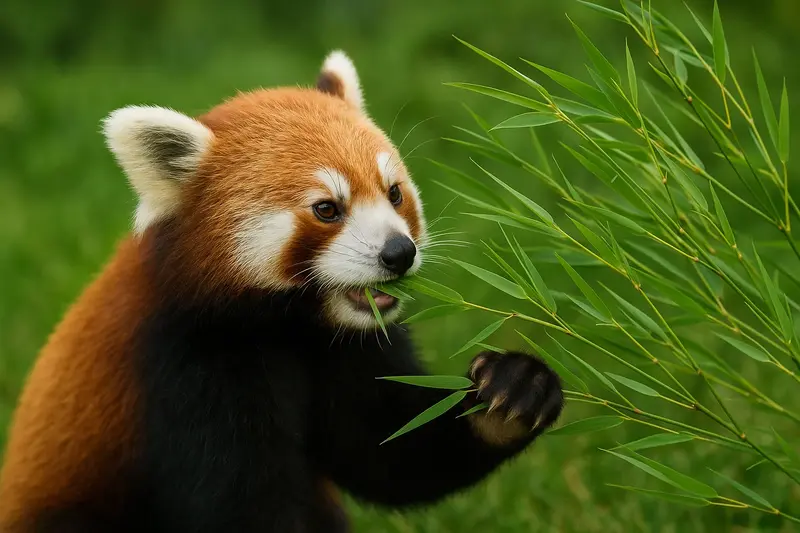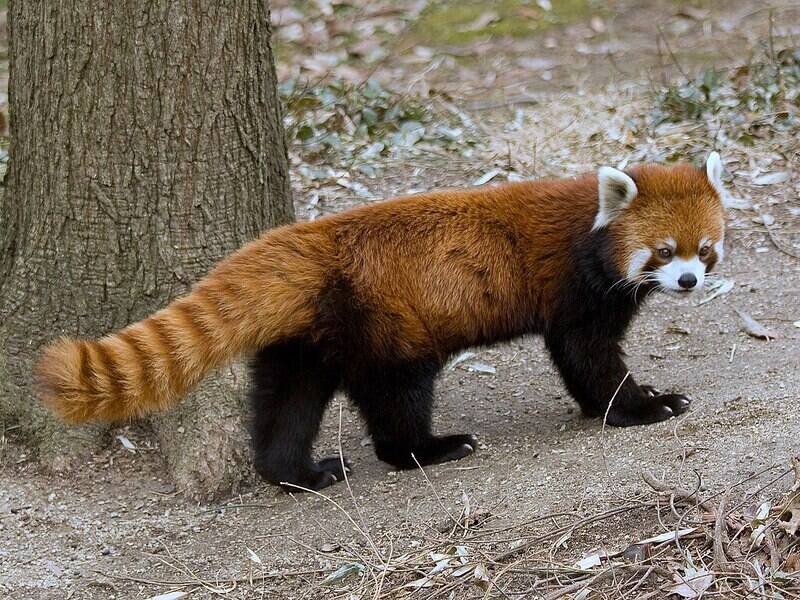Red pandas (Ailurus fulgens), despite their name, are not closely related to the giant panda. These small, tree-dwelling mammals inhabit the temperate forests of the Himalayas and parts of southwestern China. Though classified as carnivores, red pandas have a predominantly herbivorous diet. This article explores the red panda's feeding behavior, dietary composition, digestive adaptations, and dietary needs in the wild and captivity.

Red pandas belong to the order Carnivora, but over 90% of their diet consists of plant matter. This contradiction highlights the evolutionary path of a carnivore that adapted to a plant-based diet.
Red pandas occupy a rare ecological niche: they are herbivores with a carnivore's digestive system, meaning they must consume large quantities of low-nutrient food to meet energy needs.
Bamboo leaves and young shoots make up the bulk of their diet
They prefer tender bamboo parts, which are easier to digest
To meet their nutritional requirements, red pandas also consume:
Fruits (e.g., berries, apples)
Blossoms and tender leaves of other plants
Acorns and roots
Occasionally insects, bird eggs, or small rodents
Red pandas adjust their diet depending on bamboo availability:
Spring/summer: more leaves, fruits, and blossoms
Winter: more reliance on bamboo and roots
Red pandas lack the complex stomach or long intestines typical of herbivores. As a result, bamboo passes quickly through their gut, limiting nutrient absorption.
To compensate for poor digestion, red pandas spend up to 13 hours a day feeding and consume 1 to 2 kg of bamboo daily.
Red pandas are excellent climbers and often forage in trees, carefully selecting edible bamboo parts and fruit.
They are primarily solitary and feed at dawn and dusk (crepuscular), minimizing competition and predation risks.

Captive red pandas are provided with:
Bamboo shoots and leaves (fresh or frozen)
Apples, grapes, and other soft fruits
Leaf-eater biscuits (high-fiber formulated pellets)
Sweet potatoes, carrots, and other veggies
Zoos offer enrichment through food puzzles and foraging challenges to stimulate natural behaviors and prevent boredom.
Veterinarians and zookeepers track intake and weight to adjust diet for seasonal needs and health conditions.
Red pandas absorb only 20-30% of nutrients from bamboo, making diet quantity critical.
With less movement and more calorie-dense foods, captive red pandas may gain excess weight if not monitored.
Habitat loss and bamboo die-offs can lead to seasonal malnutrition and reduced reproductive success.
Because red pandas are bamboo specialists, conservation efforts must prioritize bamboo forest protection.
Bamboo growth is temperature and moisture-sensitive, making red pandas vulnerable to climate change.
Proper dietary protocols in zoos support breeding programs by enhancing reproductive health and cub survival.
Red pandas showcase a fascinating dietary paradox—carnivores that eat like herbivores. Their diet is a delicate balance of quantity and variety, adapted to both ecological opportunity and evolutionary constraint.
Understanding what red pandas eat not only aids their care in captivity but also informs broader conservation strategies to protect their fragile forest habitats and ensure the survival of this charismatic species.
animal tags: Red-Pandas
We created this article in conjunction with AI technology, then made sure it was fact-checked and edited by a Animals Top editor.